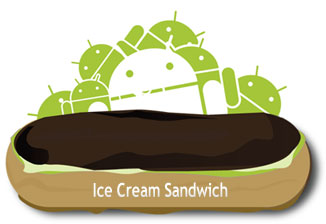
Google’s Android operating system is set to undergo major changes with the fall release of the 4.0 Ice Cream Sandwich update.Ice Cream Sandwich represents a significant philosophical switch from Google’s previous habit of constantly rolling out waves of minor updates. The 4.0 update will be entirely open source, and any hardware from the Open Handset Alliance will be required to run the most recent Android updates for at least 18 months after the devices’ initial release date.
Mobile users will no longer have several dozen versions of supported Android operating systems. The shift is expected to reduce confusion among users, and customers will find it easier to use the same apps on devices from different years.
Although the Ice Cream Sandwich update may limit some design elements at release, Google says it will continue to create new APIs for developers as quickly as the company can perform tests. Announced APIs include Android’s Open Accessory feature. Third-party devices will be able to connect to any Android device using USB or Bluetooth, and devices will be able to send data in either direction. For example, a bicycle could sync with a cyclist’s phone to record average speeds, ride distances, or route information.
The open source code and increased number of APIs should make it easier for the average user to create their own apps. Because previous Android updates hid most of their source code, app building was primarily limited to developers who had the technical expertise to build apps.
Standardized updates will allow more Android users to have the latest features as long as they have purchased a device within the previous 18 months. However, users with customized UIs may still receive updates at a slower pace. Google has not decided how to update devices with custom UIs, but the company is testing various options.
Google will be incorporating OpenGL facial tracking for some 3D elements on devices with cameras. Ice Cream Sandwich will monitor a user’s distinct facial features, but the device will also copy everything within eyesight to produce the 3D effects. The system is similar to how Microsoft’s Kinect maps and displays people.
Because developers will only have to work with a single set of operating system requirements, mobile users should see longer life from their phone batteries. Developers should be able to optimize apps and hardware without trying to adapt to dozens of different Android versions. Optimization should decrease the power draws on most phone batteries.
Google expects Ice Cream Sandwich to eventually be used for laptops, smartphones, and tablets. However, smartphones with 4.0 should reach the market first, and tablets are likely to be released before any laptops running Ice Cream Sandwich.
Although Ice Cream Sandwich was originally scheduled for the fourth quarter of 2011, analysts believe Google has moved up the release date due to pressure from Apple. The operating system and its first devices are expected to launch in or around October of 2011, but Google has not yet announced a formal release date.
If you liked our article ,don’t forget to like our post.

Gary S. Norton
Sep 26. 2011
I have a Xoom Wifi 3.2.1. Will I be able to install Ice Cream Sandwich?
admin
Sep 26. 2011
Honey Comb is yet to come !!
Gary S. Norton
Sep 28. 2011
Hi ,
I am not certain that I understand your reply . I wish to know if Ice Cream Sandwich can be used to replace Honeycomb?
sk
Sep 28. 2011
Well answer is YES, You can. But will you be getting the full functionality is something which need to checked when the version is released in the market.
Let’s keep the fingers crossed till then.